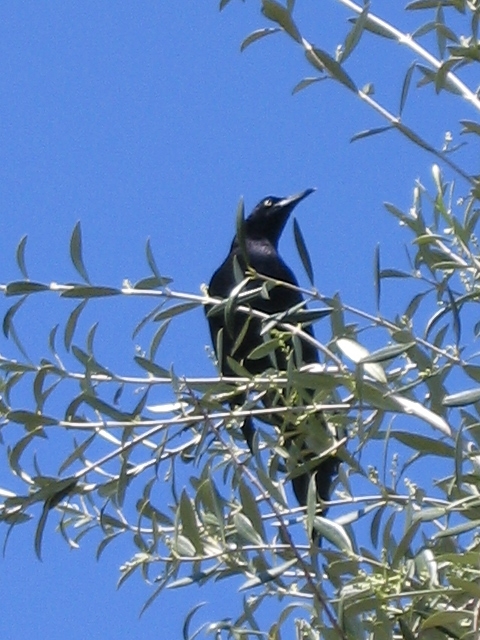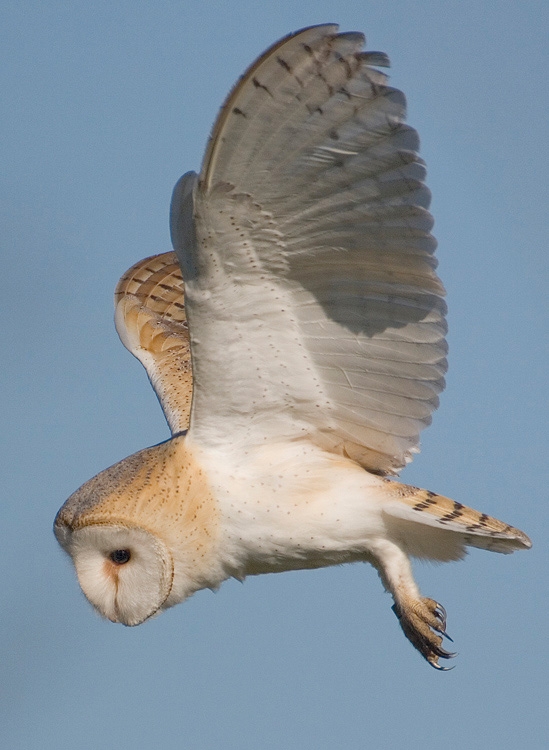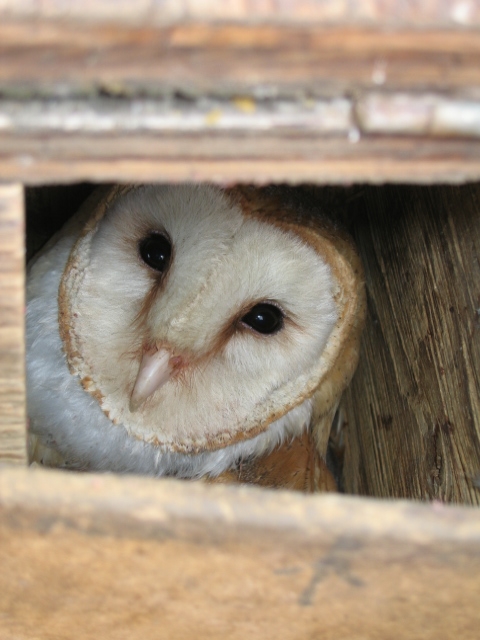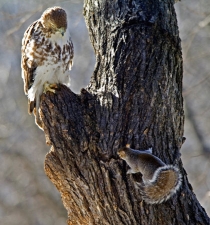by Larry Jordan
on November 16, 2008

Gray Fox Hanging Out In Our Front Yard photo by Larry Jordan
This Gray Fox and his family have been hanging around our house of late. They are great fun to watch and it is a joy just to be able to see them. I have another friend that I would like everyone to help save from the chopping block.
 He is the Gray Wolf. The 1995 reintroduction of gray wolves to Yellowstone National Park and central Idaho was a huge step toward restoring the balance in the northern Rocky Mountains. Elk spend less time grazing sensitive streamsides where they can’t see wolves approaching, willows and cottonwoods have proliferated as a result, and that means a new lease on life for beavers, fish, and songbirds. Carrion-eaters such as bears and eagles now have more to eat, too. Even foxes have benefited as wolves displace coyotes, which prey on the foxes.
He is the Gray Wolf. The 1995 reintroduction of gray wolves to Yellowstone National Park and central Idaho was a huge step toward restoring the balance in the northern Rocky Mountains. Elk spend less time grazing sensitive streamsides where they can’t see wolves approaching, willows and cottonwoods have proliferated as a result, and that means a new lease on life for beavers, fish, and songbirds. Carrion-eaters such as bears and eagles now have more to eat, too. Even foxes have benefited as wolves displace coyotes, which prey on the foxes.
Please take the time to go to the Center For Biological Diversity and sign the petition. Then go to Camera Critters to see the rest of the photos 😉
{ }
by Larry Jordan
on November 13, 2008

Great-tailed Grackle photo by Larry Jordan
The Great-tailed Grackle is a conspicuous bird, the male being 18 inches in length and having a long, keel shaped tail (hence the name). Another thing that makes them very obvious to the casual birder is their loud, clear whistles.[audio:https://thebirdersreport.com/audio/GTGR.mp3]
Check out the other photos from Skywatch Friday!
{ }
by Larry Jordan
on November 11, 2008

Barn Owl In Flight Photo by Nigel Pye
Barn Owls are one of the truly global species of birds, found on every continent except Antarctica. This last summer I was able to join my friend Steve to help him band some of these excellent hunters. The Barn Owl is one of many birds Steve has breeding in nest boxes.

Barn Owl In Nest Box photos by Larry Jordan
Barn Owls are excellent hunters for several reasons. Their large, forward facing eyes widen inside the skull where the retinas almost touch. Those retinas are packed with photoreceptors making it easy for them to catch prey in total darkness. They also have very sensitive ear openings that differ in position and in size. These asymmetrically positioned ears help them pinpoint sound directly in front of them while on the wing. Even the Barn Owl’s heart-shaped face helps channel the sound to its ears. [continue reading…]
{ }
by Larry Jordan
on November 10, 2008
New York, NY and Ithaca, NY—Bird and nature fans throughout North America are invited to join tens of thousands of everyday bird watchers for the 12th annual Great Backyard Bird Count (GBBC), February 13-16, 2009.
A joint project of the Cornell Lab of Ornithology and the National Audubon Society, this free event is an opportunity for families, students, and people of all ages to discover the wonders of nature in backyards, schoolyards, and local parks, and, at the same time, make an important contribution to conservation. Participants count birds and report their sightings online at www.birdcount.org.
“The Great Backyard Bird Count benefits both birds and people. It’s a great example of citizen science: Anyone who can identify even a few species can contribute to the body of knowledge that is used to inform conservation efforts to protect birds and biodiversity,” said Audubon Education VP, Judy Braus. “Families, teachers, children and all those who take part in GBBC get a chance to improve their observation skills, enjoy nature, and have a great time counting for fun, counting for the future.” Read all about it HERE.
{ }

 He is the Gray Wolf. The 1995 reintroduction of gray wolves to Yellowstone National Park and central Idaho was a huge step toward restoring the balance in the northern Rocky Mountains. Elk spend less time grazing sensitive streamsides where they can’t see wolves approaching, willows and cottonwoods have proliferated as a result, and that means a new lease on life for beavers, fish, and songbirds. Carrion-eaters such as bears and eagles now have more to eat, too. Even foxes have benefited as wolves displace coyotes, which prey on the foxes.
He is the Gray Wolf. The 1995 reintroduction of gray wolves to Yellowstone National Park and central Idaho was a huge step toward restoring the balance in the northern Rocky Mountains. Elk spend less time grazing sensitive streamsides where they can’t see wolves approaching, willows and cottonwoods have proliferated as a result, and that means a new lease on life for beavers, fish, and songbirds. Carrion-eaters such as bears and eagles now have more to eat, too. Even foxes have benefited as wolves displace coyotes, which prey on the foxes.







Social Media Connect